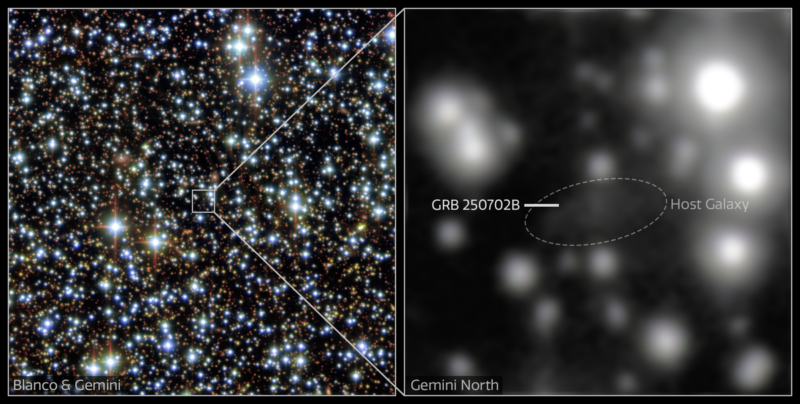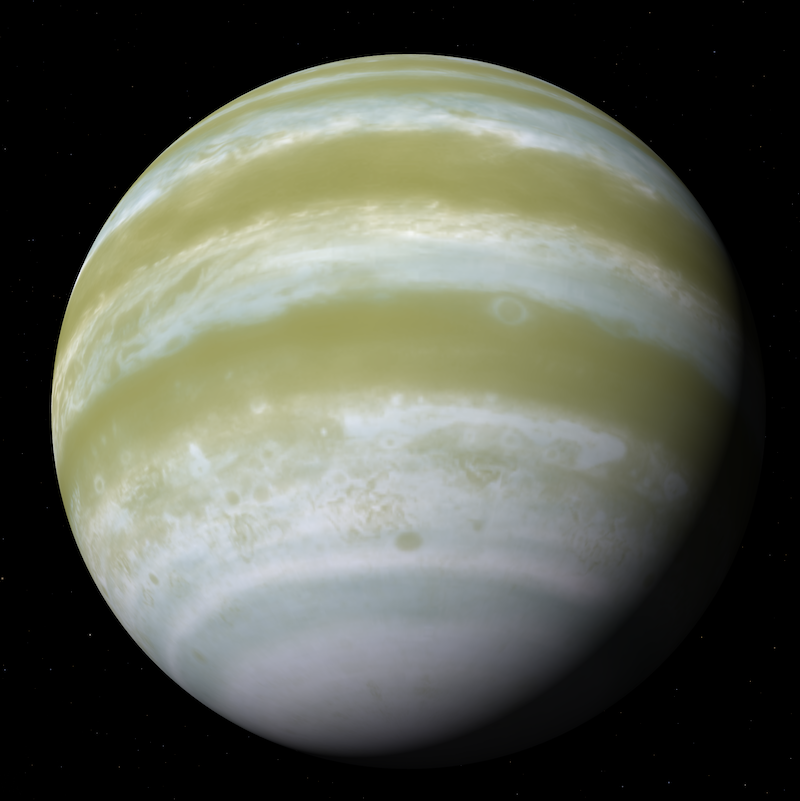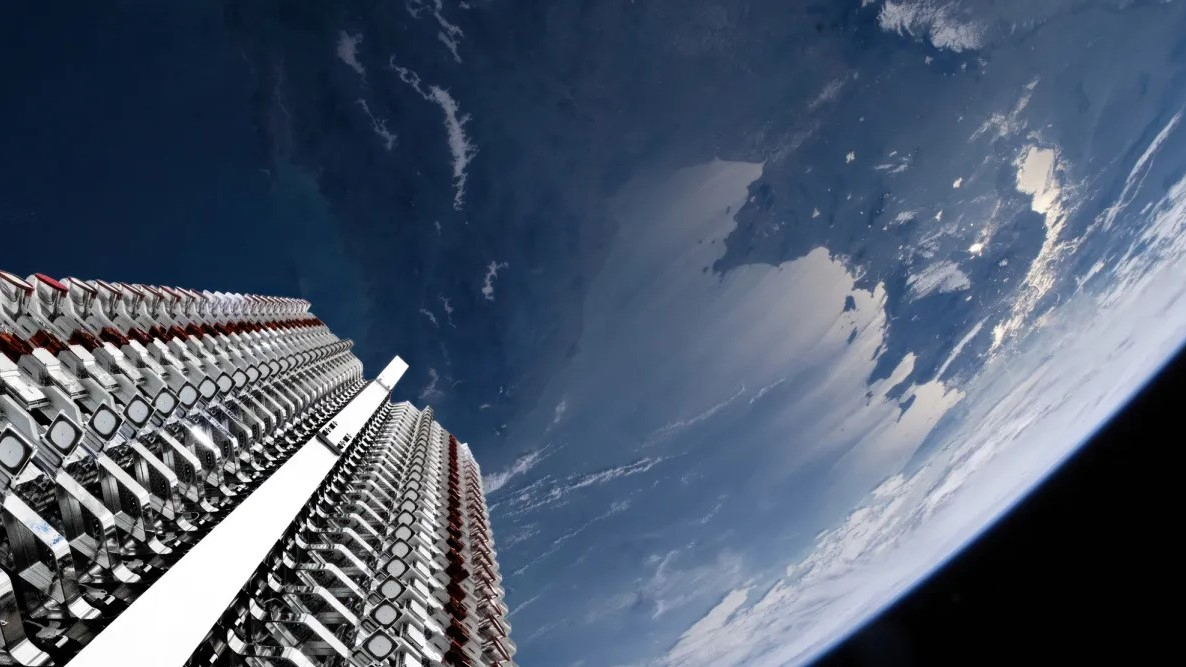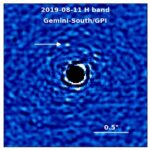Now Reading: Large Magellanic Cloud is ripping apart its smaller neighbor
-
01
Large Magellanic Cloud is ripping apart its smaller neighbor
Large Magellanic Cloud is ripping apart its smaller neighbor
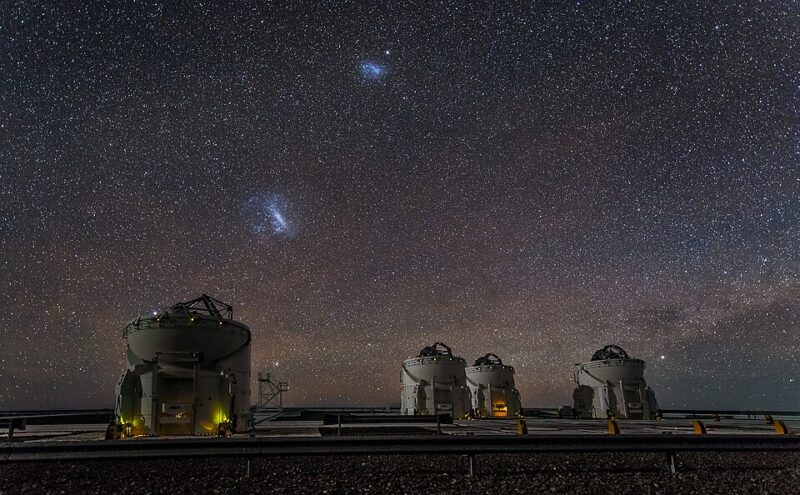

Looking up has never felt more important.
Help EarthSky keep bringing the sky to your screen.
- The Large Magellanic Cloud is pulling apart the Small Magellanic Cloud with its gravity.
- Young massive stars in the Small Magellanic Cloud are moving in a manner that shows clear signs of gravitational disruption.
- These observations offer a glimpse into how small galaxies in the early universe may have interacted and evolved.
What is happening to the Small Magellanic Cloud?
The Large and Small Magellanic Clouds are two small galaxies. They’re gravitationally bound to our home galaxy, the Milky Way. And they’re visible to the unaided eye in the Southern Hemisphere’s night sky. This month, scientists in Japan reported that – based on measurements of star movements in the Small Cloud – the Large Cloud appears to be ripping it apart.
How do we know? Scientists at Nagoya University in Japan tracked the motions of 7,426 massive stars in the Small Magellanic Cloud, using data from the Gaia observatory. This recently decommissioned observatory measured the motions of almost 2 billion stars with unprecedented accuracy.
Kengo Tachihara is a paper co-author. He said in a statement:
When we first got this result, we suspected that there might be an error in our method of analysis. However, upon closer examination, the results are indisputable, and we were surprised.
The stars in the Small Magellanic Cloud were moving in opposite directions on either side of the galaxy, as though they are being pulled apart. Some of these stars are approaching the Large Magellanic Cloud, while others are moving away from it, suggesting the gravitational influence of the larger galaxy. This unexpected movement supports the hypothesis that the Small Magellanic Cloud is being disrupted by the Large Magellanic Cloud, leading to its gradual destruction.
The researchers reported their findings in the peer-reviewed journal The Astrophysical Journal Supplement Series on April 10, 2025.
Watch a video on how the Large Magellanic Cloud is affecting the Small Magellanic Cloud. Via lead author of the study, Satoya Nakano.

More evidence of disruption in the Small Magellanic Cloud
The scientists looked up the movements of carefully selected young massive stars in the Small Magellanic Cloud. Gaia measured these stars that are more than eight times our sun’s mass.
These stars are quite young, having recently emerged from the gas clouds in which they formed. They’ve not had time to move far from those clouds, which are mostly composed of hydrogen. Therefore, there’s still a lot of hydrogen in their vicinity.
Our sun and all stars in the Milky Way galaxy revolve around the center of our galaxy. In the Small Magellanic Cloud, scientists expected to see stars revolving about its center, too. Instead, the data showed no evidence of such movement, further confirming the disruptive effect of the Large Magellanic Cloud on this small galaxy. That also meant that the hydrogen gas associated with these young stars was also not revolving about the center of the Small Magellanic Cloud.
Satoya Nakano, the paper’s lead author, commented in the statement:
If the Small Magellanic Cloud is indeed not rotating, previous estimates of its mass and its interaction history with the Milky Way and Large Magellanic Cloud might need to be revised. This could potentially change our understanding of the history of the three-body interaction between the two Magellanic Clouds and the Milky Way.

Broader implications of this study
This new study will influence how scientists study the interactions of neighboring galaxies in the early universe. That’s because the Small Magellanic Cloud has, researchers think, properties of early primordial galaxies.
The Small Magellanic Cloud has low-metallicity stars. In other words, most elements found in those stars are hydrogen and a little helium. Moreover, there is a very low level of heavier elements in those stars, elements that could only have been created in previous stars.
The Small Magellanic Cloud also has a low mass and therefore does not have much gravitational force to hold itself tightly. Some scientists think that galaxies in the early universe might have had the same characteristics. (However, observations from the James Webb Space Telescope, revealing massive galaxies in the early universe, may be contradicting that theory.)
The researchers think that Small and Large Magellanic Cloud dynamics might be similar to how galaxies in the early universe interacted with each other billions of years ago. This in turn helps them understand how galaxies evolved over time.
Bottom line: Data from the Gaia observatory show that the Large Magellanic Cloud is ripping apart its smaller neighbor, the Small Magellanic Cloud. Both are small satellite galaxies to our Milky Way galaxy.
Read more: Farewell to Gaia after 12 successful years
The post Large Magellanic Cloud is ripping apart its smaller neighbor first appeared on EarthSky.
Stay Informed With the Latest & Most Important News
Previous Post
Next Post
-
 012024 in Review: Highlights from NASA in Silicon Valley
012024 in Review: Highlights from NASA in Silicon Valley -
 02Panasonic Leica Summilux DG 15mm f/1.7 ASPH review
02Panasonic Leica Summilux DG 15mm f/1.7 ASPH review -
 03From Polymerization-Enabled Folding and Assembly to Chemical Evolution: Key Processes for Emergence of Functional Polymers in the Origin of Life
03From Polymerization-Enabled Folding and Assembly to Chemical Evolution: Key Processes for Emergence of Functional Polymers in the Origin of Life -
 04How New NASA, India Earth Satellite NISAR Will See Earth
04How New NASA, India Earth Satellite NISAR Will See Earth -
 05And Thus Begins A New Year For Life On Earth
05And Thus Begins A New Year For Life On Earth -
 06Astronomy Activation Ambassadors: A New Era
06Astronomy Activation Ambassadors: A New Era -
07SpaceX launch surge helps set new global launch record in 2024













